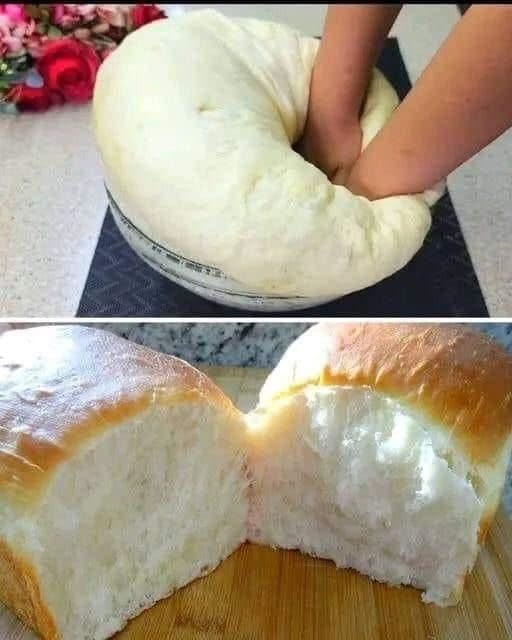A mold measuring 20.8 cm in length, 11.8 cm in width, and 11 cm in height can produce a loaf weighing 450 grams.
Timing and Temperature for Baking:
Bake for around 25 to 30 minutes at 170°C (340°F).
FIRST STEPS:
Combine the liquid ingredients:
Combine 300 milliliters (0.85 cup) of water, 25 grams (2 tablespoons) of sugar, and 3 grams (1 teaspoon) of yeast in a large basin. The sugar and yeast will dissolve if you stir them well.
Mix the dry ingredients together until a dough forms.
Add 300 grams (2 cups) of bread or wheat flour and 3 grams (1/2 teaspoon) of salt to the wet mixture slowly while mixing. Stir until a dough forms.
Combine with the olive oil.
For every two tablespoons of dough, add twenty grams of olive oil. Integrate the oil into the dough by combining the two using a spatula.
Starting to Relax:
For at least 20 minutes, cover the bowl with a clean kitchen towel or plastic wrap to let the dough rest.
Add another knead to the dough.
Stir the dough again after 20 minutes to make sure it’s smooth. The dough will rise more easily without kneading if you do this.
Initial Editing:
To make sure the dough doubles in size, cover and let aside in a warm place for about an hour.
Proceed to prepare the dough for shape.
To keep things from sticking, dust a clean surface with flour or use a silicone baking mat. Transfer the dough onto the drying mat. To prevent sticking, sprinkle more flour over the dough. After that, flatten and eliminate air by pressing down on the dough.
Flatten the dough into a rectangle.
After you’ve folded the dough in half four times, shape it into a ball.
Keep Away from Mold:
Divide the dough into three halves of equal size. Roll the dough into a ball by encircling it with your palms and turning it over on the work surface.
Rest the dough.
Let the dough balls rest for about 15 minutes with a cloth covering them.
Fit each component into the mold.
Roll out the dough into a long strip using each piece. Gently push down on each one.
To make the dough longer, turn it over, fold in the edges, and roll it out.
To roll it from the thicker end, turn it over and flatten one side. Tightly squeeze the end to seal it.
Prepare yourself for the next round of inspection.
Fill the mold, which has dimensions of 20.8×11.8×11 cm and can accommodate 450g of dough, with each portion. Repeat with the remaining dough pieces.
Additional Editing:
Cover with a towel and set aside a warm area to let the dough to rise for about half an hour, or until the mold is 80–90% full.
Roll out the bread.
Prior to use, bring the oven temperature up to 170°C, or 340°F. After the dough has risen, cook it for about 25 to 30 minutes, or until it begins to look golden brown.
Ready to Enjoy:
Once the bread has cooled for a few minutes in the pan, remove it from the oven and transfer it to a cooling rack to finish cooling. Slice and enjoy some soft, just-baked, handmade bread.
Important Words of Wisdom:
Oil Substitute:
If you choose not to use olive oil, you may substitute another kind of cooking oil, such as canola, sunflower, or vegetable oil.
Make adjustments to the baking time and temperature.
The baking time and temperature should be adjusted according to the size of the baking mold and your oven, as every oven is unique. As the bread bakes, be careful not to burn it by keeping an eye on it.
Different methods of plating food:
This bread is great on its own, but it also makes great toast, sandwiches, or breakfast items when topped with avocado, jam, or butter.
Storage suggestions:
Optimal Storage Conditions: Store the bread in an airtight container or bag at room temperature for no more than three days.
To freeze bread, just wrap it in plastic and place it in a freezer-safe bag. The shelf life is three months. When needed, thaw and heat.
Appreciation for This Meal:
Very easy, requires little or no kneading.
People on restricted diets will love this since it doesn’t include any eggs or butter.
This fluffy, soft bread is perfect for toast or sandwiches.
Simple, inexpensive ingredients that are easy to find in any kitchen.
Last but not least:
If you want to create some cheap and easy homemade bread, this is the recipe for you. Because of how silky it is and how good it tastes, you will never want to buy bread again
ADVERTISEMENT
